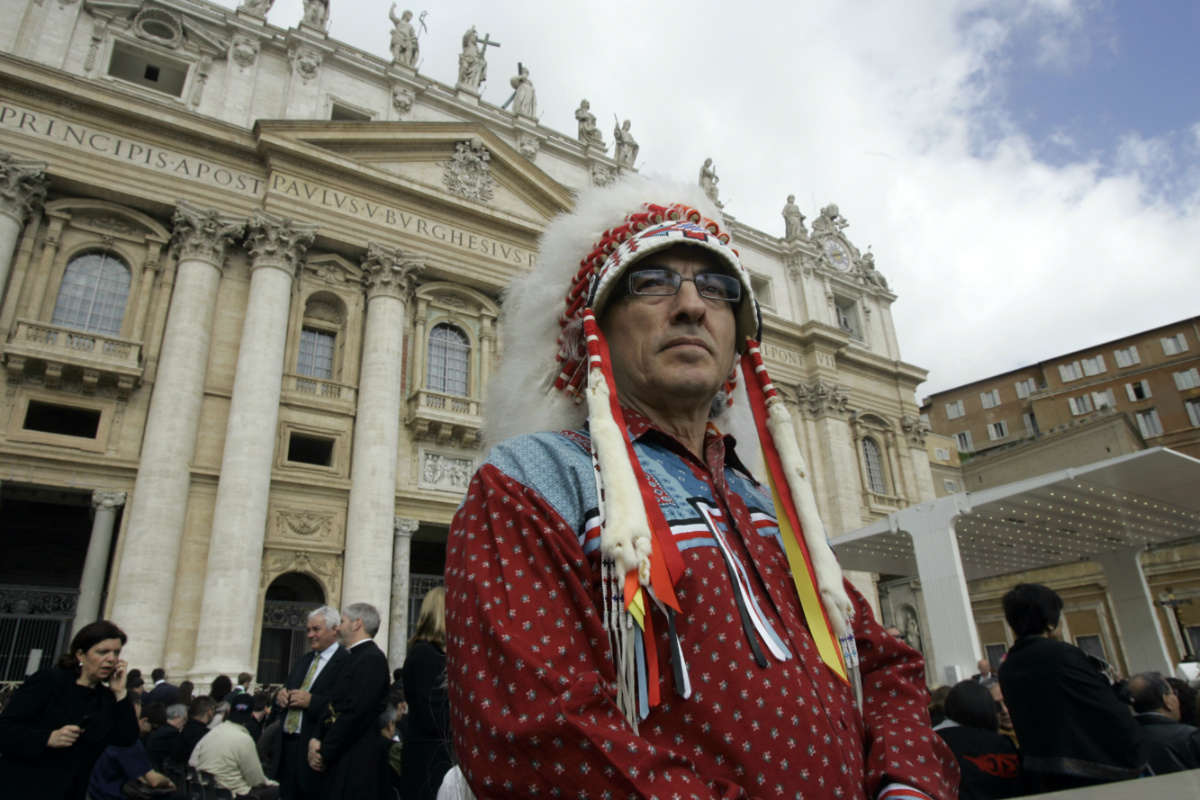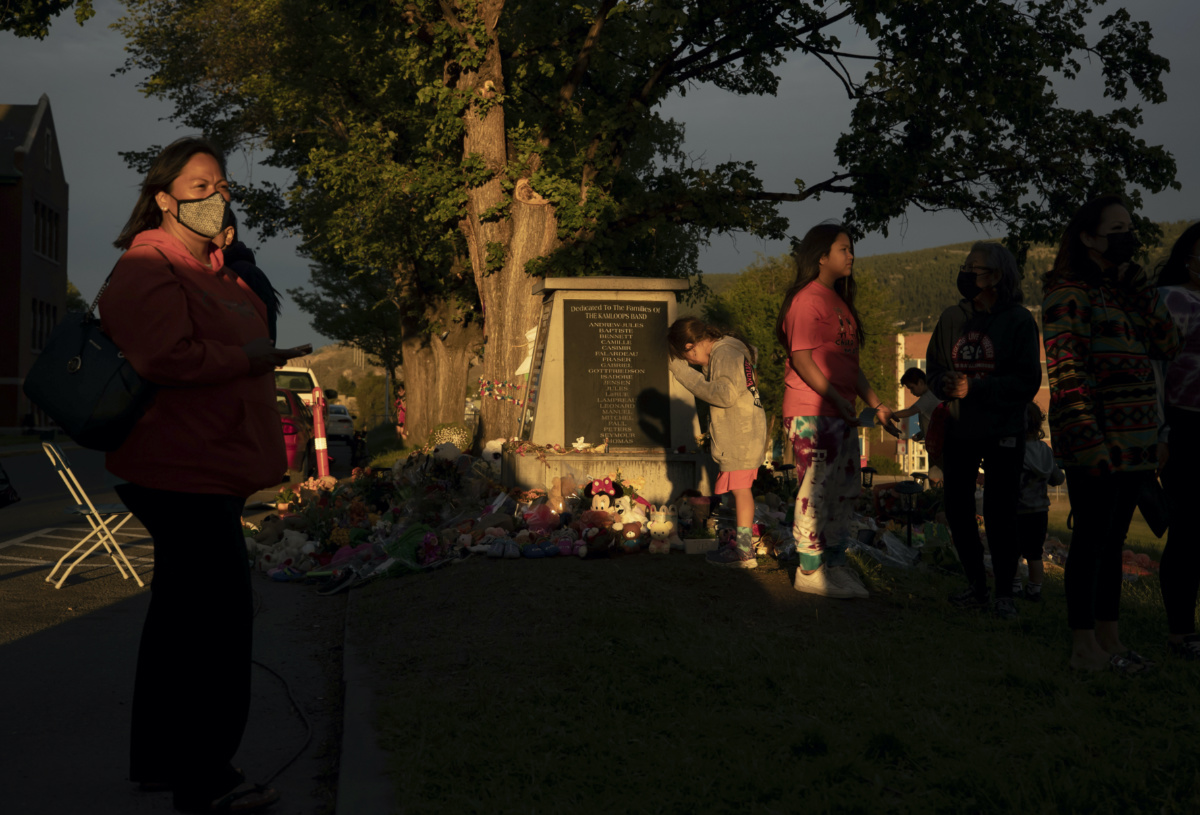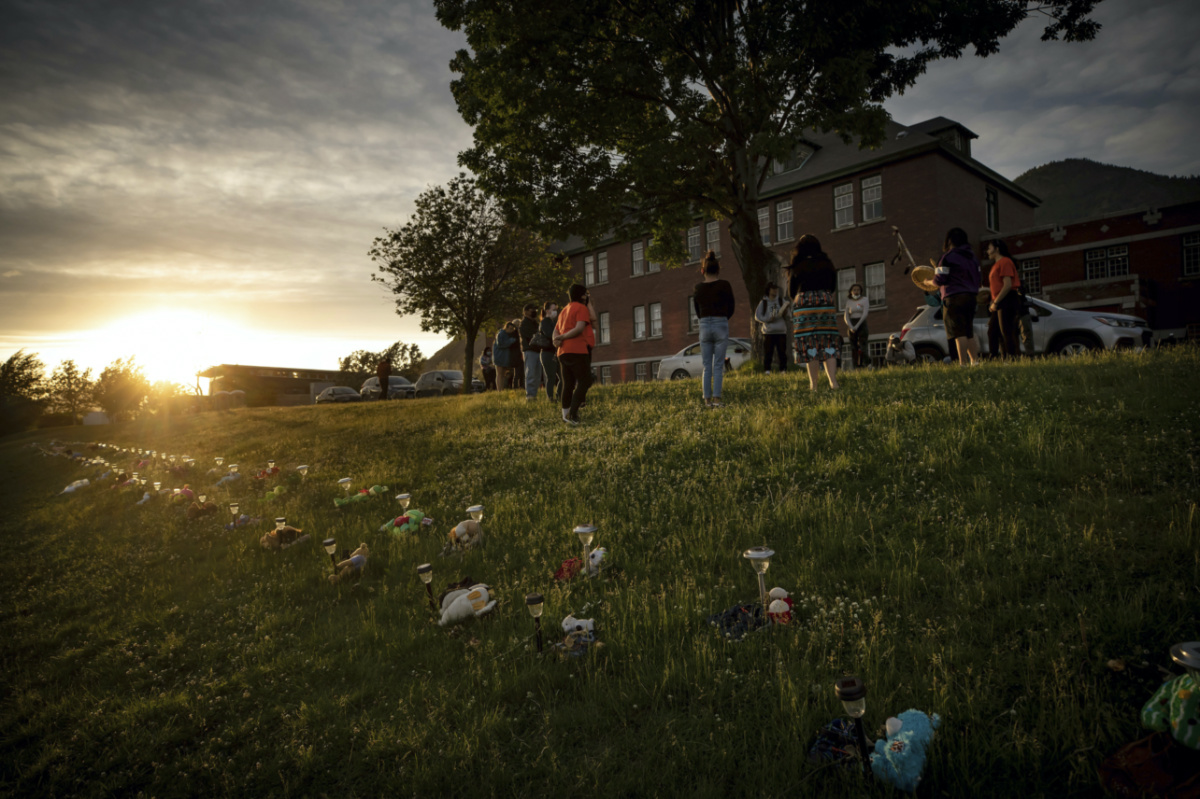Toronto, Canada
AP
When an Assembly of First Nations delegation traveled to the Vatican in 2009 to meet with then-Pope Benedict XVI, the pontiff told them in a private meeting of his “personal anguish” over abuse suffered by Indigenous children in church-run boarding schools they were forced to attend in Canada.
What at the time was called an expression of deep, heartfelt regret is no longer seen as sufficient after last year’s discovery in British Columbia of about 200 unmarked and previously undocumented graves of children at what was Canada’s largest Indigenous residential school – one of numerous, similar grim sites across the country.

Native Canadian Phil Fontaine, national chief of the Assembly of First Nations, attends Pope Benedict XVI general audience in St Peter’s Square at the Vatican, on Wednesday 29th April, 2009. A group of native Canadians attended the pontiff’s general audience before a private meeting where the pope expressed his concern for the acknowledged abuse and “deplorable conduct” of some church members at Canadian schools that native Canadians were forced to attend, in an effort to assimilate them into Canadian society. PICTURE: AP Photo/Pier Paolo Cito/File photo.
Now Indigenous leaders are expecting nothing less than a public apology from Pope Francis, with government officials up to Prime Minister Justin Trudeau lending support to their cause. Set to meet with First Nations, Métis and Inuit survivors at the Vatican next week ahead of a visit to Canada that could come later this year, the pontiff appears likely to offer just such an apology for the church’s role in boarding school abuses.
“We’re trying to give a voice to the voiceless by going there,” said Gary Gagnon, who will represent the Métis people of mixed European and Indigenous ancestry in the delegation. Originally scheduled for last December, the visit was postponed because of the COVID-19 pandemic.
More than 150,000 native children were forced to attend state-funded Christian schools from the 19th century until the 1970s in an effort to isolate them from the influence of their homes and culture, Christianise and assimilate them into mainstream society, which previous governments considered superior.
The government has admitted that physical and sexual abuse was rampant, with students beaten for speaking their native languages. That legacy of abuse and isolation has been cited by Indigenous leaders as a root cause of epidemic rates of alcohol and drug addiction on reservations.
Nearly three-quarters of the 130 residential schools were run by Catholic missionary congregations.
Last May the Tk’emlúps te Secwépemc Nation announced the discovery of the gravesites near Kamloops, British Columbia, found using ground-penetrating radar. The sites have not yet been excavated, but they renewed a national reckoning as Indigenous groups across the country search for graves at other residential schools.
“What really spurred things forward was Kamloops,” said Phil Fontaine, who was national chief of the Assembly of First Nations in 2009 and led the delegation that met with Benedict. “It grabbed the attention of so many people.”
Fontaine, 77, said he and his classmates suffered physical and sexual abuse when he was a boy at the Fort Alexander Indian Residential School in Manitoba, where he was forbidden from seeing family except for two hours on Sundays even though they lived nearby.
“Finally Canadians are saying, ‘Oh, so it’s true. This is what happened at residential schools,’” he added. “And I think it put a lot of pressure on the Catholic Church and the Vatican. Keep in mind the prime minister himself asked Francis to apologize.”
Fontaine is calling for the Pope’s Canada visit, which the Vatican has announced but as yet has no set date, to happen on Indigenous lands.

People gather around a makeshift memorial at a monument outside the former Kamloops Indian Residential School, honouring the 215 children whose remains have been discovered buried near the facility, in Kamloops, British Columbia, Friday, on 4th June, 2021. PICTURE: Darryl Dyck/The Canadian Press via AP/File photo.
A National Truth and Reconciliation Commission has records of at least 51 children dying at the Kamloops school between 1915 and 1963.
Nationwide, the commission identified about 3,200 confirmed deaths at residential schools amid poor conditions, some from tuberculosis, but noted that the cause of death was not recorded for almost half of them. Standard practice was not to send the bodies of the students who died back to their communities; the commission said the government wanted to keep costs down.
Calgary Bishop William McGrattan, vice president of the Canadian Conference of Catholic Bishops, said the church hopes next week’s Vatican encounter will be a historic moment for all Canadians, but “most especially our First Nation and our Métis.”
“They will be bringing their own stories and the stories of their communities,” McGrattan said. “Pope Francis and the bishops will listen and respond to make sure we are committed to this path of reconciliation.”
Former Prime Minister Stephen Harper issued a formal apology over the residential schools in Parliament in 2008, calling them a sad chapter in Canadian history and saying the policy of forced assimilation caused great harm.
We rely on our readers to fund Sight's work - become a financial supporter today!
For more information, head to our Subscriber's page.
As part of a settlement of a lawsuit involving the government, churches and the approximately 90,000 surviving students, Canada paid reparations that amounted to billions of dollars being transferred to Indigenous communities.
The Catholic Church, for its part, has paid over $US50 million and now intends to add $US30 million more over the next five years.
The United, Presbyterian and Anglican churches already have apologised for their roles.
Canada’s residential schools were based on similar facilities in the United States, where Catholic and Protestant denominations operated more than 150 boarding schools between the 19th and 20th centuries, according to researchers, that also were home to rampant abuse.

A group of youths lead a group drumming and singing at sunset outside the former Kamloops Indian Residential School, to honour the 215 children whose remains have been discovered buried near the facility, in Kamloops, British Columbia, on Friday, 4th June. 2021. PICTURE: Darryl Dyck/The Canadian Press via AP, File photo.
While the issue has drawn comparatively little attention in the US, Fontaine believes a day of reckoning is coming for Canada’s neighbour to the south.
The aim of the residential school systems, he argued, was no less than cultural genocide.
“They decided that the best way to do that is to herd children into residential schools, forbid them to speak Indigenous language, forget about their culture,” Fontaine said. “In fact, embrace everything that was not them in terms of culture and tradition, in keeping with federal government policy.”






